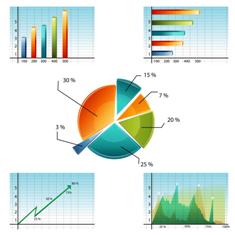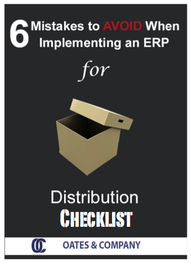Welcome to today’s installment of The 6 Stages of ERP Implementation. We discussed the 6 Stages briefly and we covered Stage 2 – Planning and Designing – in-depth last week. Today we’re going to talk about the third stage.
Measure twice, cut once. It may surprise you, but this applies to ERP implementations as well as building things! It makes no sense to start developing (building) something before proper planning (measurements) has occurred.
Stage #3: Developing and Analyzing
At this point, you have researched, selected, planned, and designed for your ERP system – now it’s time to use the data and other information that you collected to prepare the new system for data migration. You know what data needs to be moved and you’ve chosen the formats that you want to use, and now is the time to establish a testing environment and further develop user skills.
To do this you must:
Customize
Enterprise resource planning systems have more flexibility than ever before. There are a variety of approaches that a company can take, and a nearly endless supply of customizations – in the form of add-ons and altered code – are possible. In this stage, the implementation team will build, deploy, and test the features that were chosen in the designing stage. This could involve building system connections, writing or modifying dashboards, and developing new processes that will incorporate old software into the new ERP software.
Configure the System
To configure the system correctly, the implementation team will need to move important data like account information, customer information, vendor information, financial history, inventory numbers, etc. into the system. Charts will need formatting, customer and vendor data formats must be set, and everything will need importing.
Run a Mock Go Live
Now that all of the configuring has been done, it’s time to run a mock go live. You should simulate the conditions of the real go live as much as possible, and then walk through your entire business process – from receiving the order to picking to packing to shipping to payment, for example – in the new system. This allows you to forestall possible negative variables and provides the implementation team another chance to test the design to see if it meets your business requirements and if it will run as expected at your official go live.
Develop Employee Training
It’s important to make sure that your employees know how to do their jobs in the new system once it goes live.
Now that the implementation of the new ERP system has, for all intents and purposes, been completed – all you’re waiting for now is to make it official – it’s time to create training materials. The customizations have been made, the data has been imported, and now your employees must have time to learn and practice their jobs before the system goes live. The procedures that were developed by the implementation team earlier will be the foundation for the training so that the users learn to use the system as it was specially developed and intended to be used.
Stage 4 is testing, but it’s important to note is that while testing technically comes after the development, stage, the stages will actually overlap considerably. This is because the implementation team will jump between the two stages as they constantly fine-tune the configuration. So come back later to read about stage 4!



